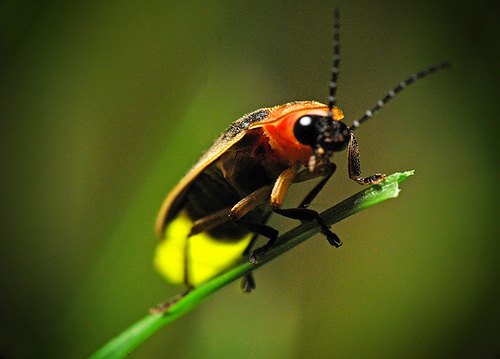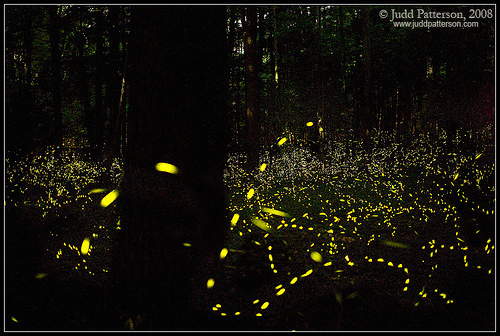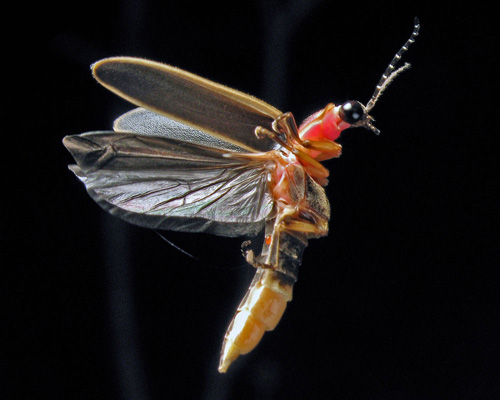We had some scientific/space/sugary fun this afternoon! You can find this Oreo Moon Phase Freebie handout we used here on Tpt. http://www.teacherspayteachers.com/Product/Free-Phases-of-the-Moon-With-Oreo-Cookies-1135117
Kwahadi Dancers Visited Today
Posted by
Teacher
at
7:27 PM
What an amazing performance! Thank you so much for coming! We thoroughly enjoyed it!




|
2- Digit Subtraction with Regrouping!
Posted by
Teacher
at
6:50 PM
We are subtracting 2-digit numbers from 2-digit numbers! AND REGROUPING!!! Can you believe your second graders are doing this?????????????
Can you believe they are making it look easy?????
I am so proud of these kids! They are flying through some of the hardest concepts with ease!
This week we are reading.............AND INFERENCING!!!!
Posted by
Teacher
at
6:36 PM
What Happened to Patrick's Dinosaurs by Carol Carrick
Due to the short holiday week, we will NOT have a test this week. :)

Due to the short holiday week, we will NOT have a test this week. :)

Here is a YouTube video of this book being read
This is a great book for inferencing! We did an inferencing activity today-
My second graders got to do something I bet they NEVER thought they would be able to do! They got to go through my purse!!!!!!!!!!!! We made a chart titled:
What's in Mrs. Lawson's Bag?
(and more importantly, what does it all mean???????????)
I found this idea on Pinterest & it isn't new but it is soooooooooooo powerful for teaching inferencing! Students really understand the evidence and reasonableness of their inferences after this activity. I am looking forward to our animal inferencing activity tomorrow!
Pictures to come! :)
Next week we will be reading Puddle Jumper- How A Toy is Made by Ann Morris who is also the author of How Teddy Bears Are Made
.
In Puddle Jumper, Sarah's father doesn't go to an office or factory to work. He designs and builds wooden toys in a workshop near their home, and sometimes he lets Sarah help. This text takes children through the process of inventing a new toy-from design to assembly to the best part of all, trying it out.
This is a great book for inferencing! We did an inferencing activity today-
My second graders got to do something I bet they NEVER thought they would be able to do! They got to go through my purse!!!!!!!!!!!! We made a chart titled:
What's in Mrs. Lawson's Bag?
(and more importantly, what does it all mean???????????)
I found this idea on Pinterest & it isn't new but it is soooooooooooo powerful for teaching inferencing! Students really understand the evidence and reasonableness of their inferences after this activity. I am looking forward to our animal inferencing activity tomorrow!
Pictures to come! :)
Next week we will be reading Puddle Jumper- How A Toy is Made by Ann Morris who is also the author of How Teddy Bears Are Made
.
In Puddle Jumper, Sarah's father doesn't go to an office or factory to work. He designs and builds wooden toys in a workshop near their home, and sometimes he lets Sarah help. This text takes children through the process of inventing a new toy-from design to assembly to the best part of all, trying it out.
We Had Perfect Attendance Last Week!
Posted by
Teacher
at
5:19 AM
So Joe, the bear, got to visit our classroom! :)
Way to go 2nd graders!
All day, every day!
Keep it up!
Guest Blogger K.J.
Posted by
Teacher
at
11:06 AM
This amazing author included a poem she read. :) She is doing a wonderful job of using her potato to include senses and imagery. She does an amazing job of including details and activating her audience's movie in their head. Way to go! Award winning author someday? I think so!!!!!!
Next Week's Book is Fireflies for Nathan
Posted by
Teacher
at
7:54 PM

Next week we are reading Fireflies for Nathan by Shulamith Levey Oppenheim
It is a beautifully written story with wonderful vocabulary about a six year old boy named Nathan hunting for fireflies with his Nana and Poppy. Nathan puts them in the very same jar his daddy did as a child.
Here is a link to the text only Fireflies for Nathan
Here is a great Youtube video with lots of information on fireflies! Please watch it all the way to the BEAUTIFUL END!
If you are interested in learning more about Fireflies check it out here: Firefly.org
 I saw my first firefly when I was 12 years old in Michigan. I thought they would would burn me when I touched them. It wasn't until I touched them did a learn what the glow was... More
I saw my first firefly when I was 12 years old in Michigan. I thought they would would burn me when I touched them. It wasn't until I touched them did a learn what the glow was... More
 Fireflies live in various habitats. Many species thrive in forests, fields or the margins between them. Some live in more arid areas, but they typically follow the rainy season. Fireflies are found all over the world, from North and South America to Europe and Asia. More
Fireflies live in various habitats. Many species thrive in forests, fields or the margins between them. Some live in more arid areas, but they typically follow the rainy season. Fireflies are found all over the world, from North and South America to Europe and Asia. More
If you are interested in learning more about Fireflies check it out here: Firefly.org
- Home
- Facts About Fireflies
- Types of Fireflies
- Synchronous Fireflies
- Disappearing Fireflies
- Light Pollution
- Firefly Habitat
- How to Help
- How to Catch Fireflies
- Firefly Questions
- Firefly Names
- Firefly Sightings
- Firefly Stories
- Firefly Pictures
- Firefly Resources
- Certify Your Backyard!
- Bioluminescent Insects
Firefly Sightings
- Catching fireflies is an important part of summer.
- Help us track where people are seeing fireflies in their backyard.
- Submit your sightings on the map and connect with others who spotted fireflies in your area.
SUBMIT YOUR SIGHTINGS
Fun Fact:
There are estimated to be 2,000 firefly species. These insects live in a variety of warm environments, as well as in more temperate regions, and are a familiar sight on summer evenings.
There are estimated to be 2,000 firefly species. These insects live in a variety of warm environments, as well as in more temperate regions, and are a familiar sight on summer evenings.
Fun Fact:
Firefly light is usually intermittent, and flashes in patterns that are unique to each species. Each blinking pattern is an optical signal that helps fireflies find potential mates.
Firefly light is usually intermittent, and flashes in patterns that are unique to each species. Each blinking pattern is an optical signal that helps fireflies find potential mates.
Glowing, Glowing, Gone.
Remember watching fireflies light up your yard on hot summer nights? Fireflies are beautiful, mysterious, and magical—and for many of us, catching and spotting them is an important part of summer. But firefly populations are dwindling all over the country—and all over the world.

- Photinus Pyralis eastern US firefly
Why Are Fireflies Disappearing?
Nobody knows for sure. But most researchers blame two main factors: development and light pollution. Most species of fireflies thrive as larvae in rotting wood and forest litter at the margins of ponds and streams. And as they grow, they more or less stay where they were born. Read More

- Catching fireflies
How Can I Help Fireflies Recover?
Fireflies are disappearing all over the world, and it's believed to be because of human encroachment on habitat and increased light pollution from development and traffic. But there are a few things you can do to help fireflies make a comeback in your area. Follow these steps, and with luck your yard will once again sparkle on summer nights. Read More
Read more Firefly Facts >>
Firefly Pictures
GOT A GREAT FIREFLY PHOTO? SUBMIT US YOUR BEST FIREFLY SHOT!
Your Firefly Story
I thought Fireflies were hot by touch when I was twelve.
 I saw my first firefly when I was 12 years old in Michigan. I thought they would would burn me when I touched them. It wasn't until I touched them did a learn what the glow was... More
I saw my first firefly when I was 12 years old in Michigan. I thought they would would burn me when I touched them. It wasn't until I touched them did a learn what the glow was... MoreWhere Do Fireflies Live?
Fireflies love humid, warm environments.
 Fireflies live in various habitats. Many species thrive in forests, fields or the margins between them. Some live in more arid areas, but they typically follow the rainy season. Fireflies are found all over the world, from North and South America to Europe and Asia. More
Fireflies live in various habitats. Many species thrive in forests, fields or the margins between them. Some live in more arid areas, but they typically follow the rainy season. Fireflies are found all over the world, from North and South America to Europe and Asia. MoreSEND US YOUR BEST FIREFLY STORY!
About this Website
This site is a educational resource on fireflies, also known as lightning bugs. We've got information on why fireflies are disappearing and what you can do to help. We've also got answers to frequently asked questions about fireflies, from why they glow to what they eat.
In addition, you can share pictures and stories, connect with other firefly fans, and document your firefly sightings online.
Check out our online resources to learn more about fireflies—and how you can help them make a comeback.
You may know fireflies by another name, they are sometimes referred to as fireflys, lightning bugs, glow worms, or luciérnaga. Fireflies have many different names in foreign languages, here is a full list of common and uncommon names for fireflies in another language.
FIREFLY WATCHHow to Catch Fireflies
Get prepared for this year! Fireflies start appearing as early as May in the US. Learn tips on how best to catch and release fireflies. | More
FIREFLY NEWSNew Species Discovered
In summer 2012, a rare discovery of synchronous fireflies known as Photinus carolinus were discovered in the Allegheny National Forest in Pennsylvania. Previously North America had only one known population located in Tennessee.
FUN FACT:Why Blink?
The purpose of blinking is so that male fireflies can find potential mates. If you watch long enough you will be able to pick up their blinking pattern.
SHARE YOURFirefly Story
This is the place to tell us how you brought fireflies back in your yard. | More
FUN FACT:Efficient Light Makers
Light emitted by fireflies is unique. Nearly 100% of the energy is given off as light.
CREATINGFirefly Habitats
What kind of habitat do fireflies like? Why do they like standing water? | More
FUN FACT:Firefly Larvae
Did you know that firefly larvae glow? Yes! Scientists think this to warn of potential predators.
HOW TOHelp Fireflies
There are a few things you could do to help to restore fireflies in your backyard |More
FUN FACT:Multiple Colors
Fireflies can glow either: yellow, green, orange, and sometimes blue.
© 2013 RANK SMART. ALL RIGHTS RESERVED.
Share
Subscribe to:
Posts (Atom)


















.jpg)






















